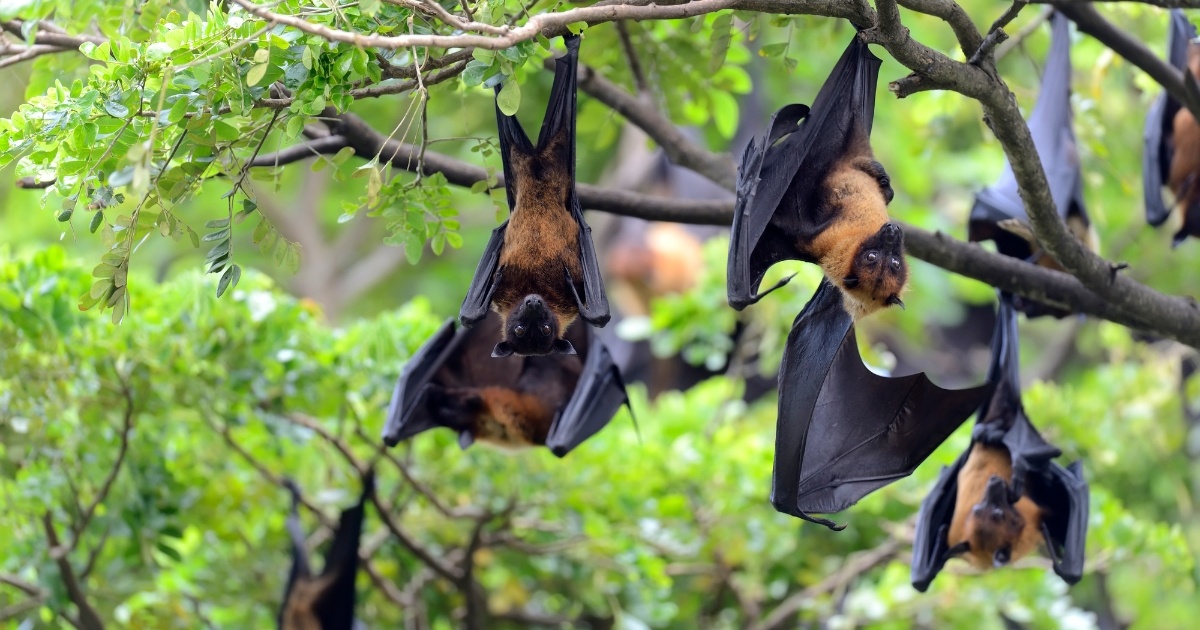WIRES Giving Day - Save the Wild!
September 2025
For emergency rescue support 24/7 please call 1300 094 737

Flying foxes, also known as bats, are a protected and essential part of Australia’s natural environment. Although their presence in urban areas can sometimes cause concern, they pose very little threat to our daily lives. In fact, without them, our forests would struggle to survive.
Understanding their behaviour, ecological importance, and how best to respond to their presence can help foster coexistence and reduce conflict.
Flying foxes are keystone species. Every night they fly long distances to feed, dispersing seeds and pollinating native trees, especially eucalypts. Their nightly efforts help maintain the genetic diversity of rainforests, forests and bushland, ensuring that ecosystems remain healthy and resilient.
They also support other wildlife. For example, the trees they pollinate provide food for koalas and other native animals. Without flying foxes, entire food webs could be at risk.
Flying foxes are seasonal visitors, not permanent residents. They typically roost in tall trees near water and are drawn to areas where native flowers and fruits are in bloom. Once those food sources disappear, the bats usually move on.
In urban areas, this movement is often misunderstood. Attempts to relocate flying fox colonies tend to backfire, pushing them into smaller, less suitable spaces or closer to residential areas. For this reason, most local councils encourage the community to learn how to live alongside them rather than displace them.
In NSW, handling or disturbing bats without proper training and permits is illegal. It can also be dangerous, as bats can carry Australian Bat Lyssavirus. The risk to the public is very low, but WIRES strongly advises that no one should handle a bat unless they are a trained carer.
If you find a bat that is injured or in trouble, please call WIRES on 1300 094 737.
If bats are feeding in your garden and you are looking for ways to reduce their impact, there are safe and humane steps you can take:
Pick fruit before it ripens, especially from palms or other trees known to attract flying foxes
Use wildlife friendly netting to protect your fruit trees. You can find this netting at hardware stores like Bunnings. A good rule of thumb is that if you can fit your pinkie finger through the hole, it is not wildlife safe
Avoid pruning during breeding season when young flying foxes are more vulnerable
Do not disturb roosting bats, especially if they have pups. Orphaned and injured young are often taken into care by trained WIRES volunteers who raise them with special handling techniques
Flying fox droppings are not highly acidic and typically wash off cars and surfaces easily. However, as with any animal droppings, it is best to:
Wear gloves when cleaning
Wash your hands thoroughly afterwards
Avoid touching your face, eyes or mouth during cleanup
If possible, try not to park under trees that bats are feeding in, particularly when blossoms or fruit are abundant. This can help reduce droppings on your vehicle, not just from bats but also from birds and other animals attracted to the same trees.
Flying foxes are shy and avoid human contact. They rarely approach people, and reports of scratches or bites are extremely rare, typically only occurring when a person tries to handle a bat.
Some of Australia’s largest bat populations live peacefully in urban areas, including Sydney, where over four million people coexist with flying foxes year round.
While it may take a little patience and understanding, learning to live with flying foxes is not only possible, it is essential for the health of our environment.
Stay in touch and get our regular rescue stories, WIRES updates and a free copy of our 15 Ways to Help Wildlife ebook
September 2025
June 2025
May 2025
April 2025
March 2025
February 2024
July 2023